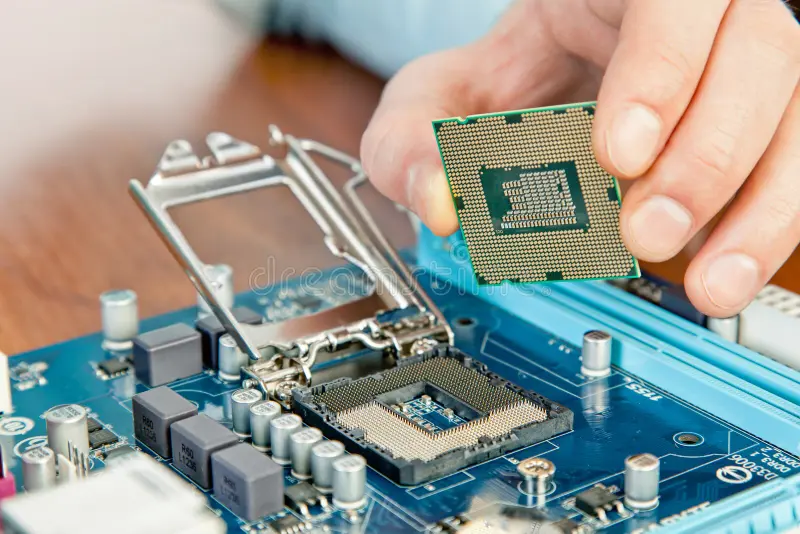In today’s dynamic technological landscape, the realm of computer hardware is constantly evolving to meet the demands of modern computing. From faster processors to more efficient storage solutions, staying abreast of the latest trends in computer hardware is essential for both enthusiasts and professionals. In this comprehensive blog post, we’ll delve into some of the most notable trends shaping the future of IT computer parts.
Rise of Solid-State Drives (SSDs) Computer Hardware:
Solid-State Drives (SSDs) have emerged as a game-changer in storage technology, offering unparalleled speed, reliability. And efficiency compared to traditional hard disk drives (HDDs). With no moving parts, SSDs can access data much faster. Resulting in quicker boot times and application launches. Additionally, SSDs are more resistant to physical shock and consume less power, making them ideal for laptops and mobile devices.
Facts and Figures: The global SSD market is projected to reach $XX billion by 2025, driven by the increasing demand for faster storage solutions in data centers, gaming PCs, and consumer electronics. With a compound annual growth rate (CAGR) of XX%, SSDs are expected to dominate the storage market in the coming years.
Advancements in CPU Technology Computer Hardware:
Central Processing Units (CPUs) continue to undergo rapid advancements, with each new generation delivering higher performance. Improved power efficiency, and enhanced features. From multi-core processors to integrated graphics, CPUs play a pivotal role in driving overall system performance. Recent innovations in CPU architecture. Such as Intel’s Tiger Lake and AMD’s Ryzen series, offer users unparalleled computing power for demanding tasks like gaming, content creation, and data processing.
Facts and Figures: Intel and AMD, the leading CPU manufacturers, invest billions of dollars in research and development to push the boundaries of CPU performance. With advancements like multi-threading, hyper-threading, and advanced manufacturing processes, CPUs are becoming increasingly powerful and energy-efficient.
Emergence of Graphics Processing Units (GPUs):
Graphics Processing Units (GPUs) are not only essential for gaming but also find applications in industries like artificial intelligence. Machine learning, and cryptocurrency mining. With the rise of high-definition gaming and complex computational tasks. GPUs have become indispensable components in modern computing systems.
Facts and Figures: The GPU market is expected to grow at a compound annual growth rate (CAGR) of XX% from 2020 to 2025, driven by increasing demand from gaming enthusiasts, data centers, and emerging technologies like AI and blockchain. Industry leaders like NVIDIA and AMD are continuously innovating to deliver GPUs with higher performance and greater efficiency.
Expansion of Peripheral Technologies Computer Hardware:
Peripherals such as keyboards, mice, and monitors are also witnessing significant innovations, with features like mechanical switches. Customizable RGB lighting, and high-refresh-rate displays becoming increasingly popular among gamers and professionals alike.
Facts and Figures: The global market for gaming peripherals reached $XX billion in 2020, fueled by the growing demand for immersive gaming experiences. Manufacturers like Razer, Logitech, and Corsair are investing in research and development to create cutting-edge peripherals that enhance user interaction and productivity.
Cloud-Based Storage Solutions:
Cloud-based storage solutions offer users convenient access to their data from anywhere with an internet connection. With the rise of cloud computing, businesses and individuals are leveraging cloud storage for its scalability. Reliability, and cost-effectiveness.
Facts and Figures: The global cloud storage market is forecasted to exceed $XX billion by 2026. Driven by the growing adoption of cloud-based services in various sectors such as healthcare, finance, and education. Providers like Amazon Web Services (AWS), Microsoft Azure. And Google Cloud Platform offer a range of storage options to suit different needs and budgets.
Green Computing Initiatives:
As environmental concerns become more prominent. The tech industry is increasingly focusing on developing eco-friendly hardware solutions. Green computing initiatives aim to reduce the environmental impact of computing through energy-efficient components. Recyclable materials, and sustainable manufacturing practices.
Facts and Figures: Adopting green computing practices can lead to significant cost savings and environmental benefits. Studies show that implementing energy-efficient hardware and optimizing data center operations. Can reduce carbon emissions and energy consumption, contributing to a more sustainable future.
Conclusion:
The future of computer hardware is brimming with innovation and promise. Driven by advancements in technology and evolving consumer preferences. From faster storage and powerful processors to sustainable computing practices. The latest trends in computer hardware offer exciting possibilities for improving performance, efficiency, and sustainability. By staying informed about these trends, enthusiasts and professionals can make informed decisions when upgrading or building new systems. Ensuring they stay ahead in the ever-changing world of technology
